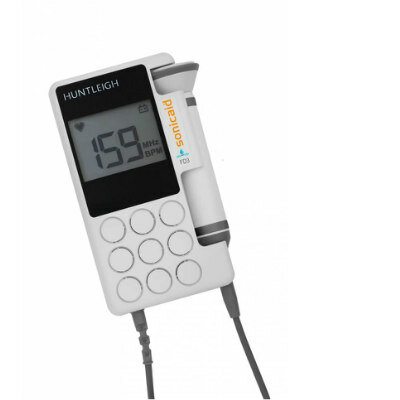Pigeons Could Advance Pathology Image Analysis Tools 
|
By MedImaging International staff writers Posted on 09 Dec 2015 |

Image: The pigeons’ training environment, with a food pellet dispenser and a touch-sensitive screen with yellow and blue selection buttons (Photo courtesy of UCD).
Pigeons can distinguish between healthy and cancerous tissue in X-rays and microscope slides with an accuracy rate of up to 99%, according to a new study.
Researchers at the University of California Davis (UCD; USA) conducted a series of three experiments in Pigeons (Columba livia), to examine if their visual system properties could help them serve as surrogate observers of medical images. Research over the past 50 years has shown that pigeons can be prodigious discriminators of complex visual stimuli, and can discriminate among misshapen pharmaceutical capsules; recognize letters of the alphabet; categorize objects such as cats, flowers, cars, or chairs; identify emotional expressions and features of human faces; and even identify paintings styles.
During the first experiment, eight pigeons were presented with 144 breast tissue images, at various levels of magnification and with and without color. The birds were then trained to peck a blue or yellow button on either side of each image to indicate whether it was cancerous or healthy; if they chose correctly, they were rewarded with food. But if they chose incorrectly, they were presented with the image again and again until they correctly identified it. After 15 days of training, the birds’ accuracy rate had risen from 50% to 85%.
The pigeons were then presented with new images to rule out memorization as a possible cause for their success. They subsequently correctly identified familiar and novel images 87% and 85% of the time, respectively. When the researchers combined the birds’ responses, a method they called “flock sourcing,” rather than scoring them individually, they found that accuracy rates increased to 99%. In the second experiment, four new birds were tested to see if they could identify microcalcifications in breast tissue. Within 14 days, their accuracy rate rose from 50% to over 85%.
The final experiment had another four birds attempt to identify masses in mammograms. While the pigeons were able to identify masses in images they had already seen with some success, with two pigeons reaching 80% correct classification and two reaching 60%, they could not identify masses as benign or malignant in new images. According to the study, this can also be very challenging for humans; a panel of radiologists previously tested reached an 80% accuracy rate when viewing the same images. The study was published on November 18, 2015, in PLOS One.
“Pathologists and radiologists spend years acquiring and refining their medically essential visual skills, so it is of considerable interest to understand how this process actually unfolds, and what image features and properties are critical for accurate diagnostic performance,” said lead author professor of pathology and laboratory medicine Richard Levenson, MD, and colleagues. “The birds' successes and difficulties suggest that pigeons are well-suited to help us better understand human medical image perception, and may also prove useful in performance assessment and development of medical imaging hardware, image processing, and image analysis tools.”
Pigeons have are able to generalize their discrimination performance to novel objects or scenes, successfully differentiating among complex and varied visual stimuli. Color, size, shape, texture, and configural cues all seem to participate in the discrimination process. Importantly, the anatomical neural pathways involved, including basal ganglia and cortical-striatal synapses, appear to be functionally equivalent to those in humans.
Related Links:
University of California Davis
Researchers at the University of California Davis (UCD; USA) conducted a series of three experiments in Pigeons (Columba livia), to examine if their visual system properties could help them serve as surrogate observers of medical images. Research over the past 50 years has shown that pigeons can be prodigious discriminators of complex visual stimuli, and can discriminate among misshapen pharmaceutical capsules; recognize letters of the alphabet; categorize objects such as cats, flowers, cars, or chairs; identify emotional expressions and features of human faces; and even identify paintings styles.
During the first experiment, eight pigeons were presented with 144 breast tissue images, at various levels of magnification and with and without color. The birds were then trained to peck a blue or yellow button on either side of each image to indicate whether it was cancerous or healthy; if they chose correctly, they were rewarded with food. But if they chose incorrectly, they were presented with the image again and again until they correctly identified it. After 15 days of training, the birds’ accuracy rate had risen from 50% to 85%.
The pigeons were then presented with new images to rule out memorization as a possible cause for their success. They subsequently correctly identified familiar and novel images 87% and 85% of the time, respectively. When the researchers combined the birds’ responses, a method they called “flock sourcing,” rather than scoring them individually, they found that accuracy rates increased to 99%. In the second experiment, four new birds were tested to see if they could identify microcalcifications in breast tissue. Within 14 days, their accuracy rate rose from 50% to over 85%.
The final experiment had another four birds attempt to identify masses in mammograms. While the pigeons were able to identify masses in images they had already seen with some success, with two pigeons reaching 80% correct classification and two reaching 60%, they could not identify masses as benign or malignant in new images. According to the study, this can also be very challenging for humans; a panel of radiologists previously tested reached an 80% accuracy rate when viewing the same images. The study was published on November 18, 2015, in PLOS One.
“Pathologists and radiologists spend years acquiring and refining their medically essential visual skills, so it is of considerable interest to understand how this process actually unfolds, and what image features and properties are critical for accurate diagnostic performance,” said lead author professor of pathology and laboratory medicine Richard Levenson, MD, and colleagues. “The birds' successes and difficulties suggest that pigeons are well-suited to help us better understand human medical image perception, and may also prove useful in performance assessment and development of medical imaging hardware, image processing, and image analysis tools.”
Pigeons have are able to generalize their discrimination performance to novel objects or scenes, successfully differentiating among complex and varied visual stimuli. Color, size, shape, texture, and configural cues all seem to participate in the discrimination process. Importantly, the anatomical neural pathways involved, including basal ganglia and cortical-striatal synapses, appear to be functionally equivalent to those in humans.
Related Links:
University of California Davis
Latest Radiography News
- Novel Breast Imaging System Proves As Effective As Mammography
- AI Assistance Improves Breast-Cancer Screening by Reducing False Positives
- AI Could Boost Clinical Adoption of Chest DDR
- 3D Mammography Almost Halves Breast Cancer Incidence between Two Screening Tests
- AI Model Predicts 5-Year Breast Cancer Risk from Mammograms
- Deep Learning Framework Detects Fractures in X-Ray Images With 99% Accuracy
- Direct AI-Based Medical X-Ray Imaging System a Paradigm-Shift from Conventional DR and CT
- Chest X-Ray AI Solution Automatically Identifies, Categorizes and Highlights Suspicious Areas
- AI Diagnoses Wrist Fractures As Well As Radiologists
- Annual Mammography Beginning At 40 Cuts Breast Cancer Mortality By 42%
- 3D Human GPS Powered By Light Paves Way for Radiation-Free Minimally-Invasive Surgery
- Novel AI Technology to Revolutionize Cancer Detection in Dense Breasts
- AI Solution Provides Radiologists with 'Second Pair' Of Eyes to Detect Breast Cancers
- AI Helps General Radiologists Achieve Specialist-Level Performance in Interpreting Mammograms
- Novel Imaging Technique Could Transform Breast Cancer Detection
- Computer Program Combines AI and Heat-Imaging Technology for Early Breast Cancer Detection
Channels
MRI
view channel
PET/MRI Improves Diagnostic Accuracy for Prostate Cancer Patients
The Prostate Imaging Reporting and Data System (PI-RADS) is a five-point scale to assess potential prostate cancer in MR images. PI-RADS category 3 which offers an unclear suggestion of clinically significant... Read more
Next Generation MR-Guided Focused Ultrasound Ushers In Future of Incisionless Neurosurgery
Essential tremor, often called familial, idiopathic, or benign tremor, leads to uncontrollable shaking that significantly affects a person’s life. When traditional medications do not alleviate symptoms,... Read more
Two-Part MRI Scan Detects Prostate Cancer More Quickly without Compromising Diagnostic Quality
Prostate cancer ranks as the most prevalent cancer among men. Over the last decade, the introduction of MRI scans has significantly transformed the diagnosis process, marking the most substantial advancement... Read moreUltrasound
view channel
Deep Learning Advances Super-Resolution Ultrasound Imaging
Ultrasound localization microscopy (ULM) is an advanced imaging technique that offers high-resolution visualization of microvascular structures. It employs microbubbles, FDA-approved contrast agents, injected... Read more
Novel Ultrasound-Launched Targeted Nanoparticle Eliminates Biofilm and Bacterial Infection
Biofilms, formed by bacteria aggregating into dense communities for protection against harsh environmental conditions, are a significant contributor to various infectious diseases. Biofilms frequently... Read moreNuclear Medicine
view channel
New SPECT/CT Technique Could Change Imaging Practices and Increase Patient Access
The development of lead-212 (212Pb)-PSMA–based targeted alpha therapy (TAT) is garnering significant interest in treating patients with metastatic castration-resistant prostate cancer. The imaging of 212Pb,... Read moreNew Radiotheranostic System Detects and Treats Ovarian Cancer Noninvasively
Ovarian cancer is the most lethal gynecological cancer, with less than a 30% five-year survival rate for those diagnosed in late stages. Despite surgery and platinum-based chemotherapy being the standard... Read more
AI System Automatically and Reliably Detects Cardiac Amyloidosis Using Scintigraphy Imaging
Cardiac amyloidosis, a condition characterized by the buildup of abnormal protein deposits (amyloids) in the heart muscle, severely affects heart function and can lead to heart failure or death without... Read moreGeneral/Advanced Imaging
view channel
New AI Method Captures Uncertainty in Medical Images
In the field of biomedicine, segmentation is the process of annotating pixels from an important structure in medical images, such as organs or cells. Artificial Intelligence (AI) models are utilized to... Read more.jpg)
CT Coronary Angiography Reduces Need for Invasive Tests to Diagnose Coronary Artery Disease
Coronary artery disease (CAD), one of the leading causes of death worldwide, involves the narrowing of coronary arteries due to atherosclerosis, resulting in insufficient blood flow to the heart muscle.... Read more
Novel Blood Test Could Reduce Need for PET Imaging of Patients with Alzheimer’s
Alzheimer's disease (AD), a condition marked by cognitive decline and the presence of beta-amyloid (Aβ) plaques and neurofibrillary tangles in the brain, poses diagnostic challenges. Amyloid positron emission... Read more.jpg)
CT-Based Deep Learning Algorithm Accurately Differentiates Benign From Malignant Vertebral Fractures
The rise in the aging population is expected to result in a corresponding increase in the prevalence of vertebral fractures which can cause back pain or neurologic compromise, leading to impaired function... Read moreImaging IT
view channel
New Google Cloud Medical Imaging Suite Makes Imaging Healthcare Data More Accessible
Medical imaging is a critical tool used to diagnose patients, and there are billions of medical images scanned globally each year. Imaging data accounts for about 90% of all healthcare data1 and, until... Read more
Global AI in Medical Diagnostics Market to Be Driven by Demand for Image Recognition in Radiology
The global artificial intelligence (AI) in medical diagnostics market is expanding with early disease detection being one of its key applications and image recognition becoming a compelling consumer proposition... Read moreIndustry News
view channel
Bayer and Google Partner on New AI Product for Radiologists
Medical imaging data comprises around 90% of all healthcare data, and it is a highly complex and rich clinical data modality and serves as a vital tool for diagnosing patients. Each year, billions of medical... Read more



















